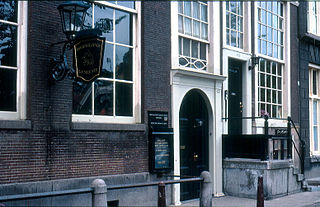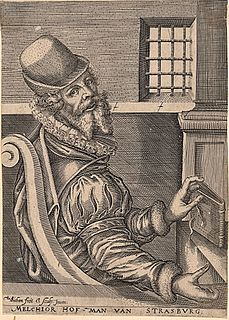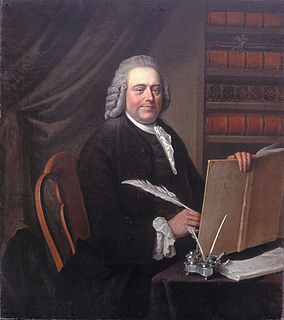Related Research Articles

Anabaptism is a Christian movement which traces its origins to the Radical Reformation.

Menno Simons was a Roman Catholic priest from the Friesland region of the Low Countries who became an influential Anabaptist religious leader. Simons was a contemporary of the Protestant Reformers and it is from his name that his followers became known as Mennonites.

The Mennonite Church in the Netherlands, or Algemene Doopsgezinde Sociëteit, is a body of Mennonite Christians in the Netherlands. The Mennonites are named for Menno Simons (1496–1561), a Dutch Roman Catholic priest from the Province of Friesland who converted to Anabaptism around 1536. He was re-baptized as an adult in 1537 and became part of the Dutch Anabaptist movement.

Theology of Anabaptism is the beliefs of the Anabaptist movement. Anabaptism has a reputation of de-emphasizing theology in deference to living righteously. The various branches of the Anabaptist movement take slightly different approaches to theology.

Pilgram Marpeck, also Pilgram Marbeck or Pilgrim Marpeck, was an important Anabaptist leader in southern Germany in the 16th century.

The Münster rebellion was an attempt by radical Anabaptists to establish a communal sectarian government in the German city of Münster – then under the large Prince-Bishopric of Münster in the Holy Roman Empire.

Melchior Hoffman was an Anabaptist prophet and a visionary leader in northern Germany and the Netherlands.

Jacob Isaackszoon van Ruisdael was a Dutch painter, draughtsman, and etcher. He is generally considered the pre-eminent landscape painter of the Dutch Golden Age, a period of great wealth and cultural achievement when Dutch painting became highly popular.

Karel van Mander (I) or Carel van Mander I was a Flemish painter, poet, art historian and art theoretician, who established himself in the Dutch Republic in the latter part of his life. He is mainly remembered as a biographer of Early Netherlandish painters and Northern Renaissance artists in his Schilder-boeck. As an artist and art theoretician he played a significant role in the spread and development of Northern Mannerism in the Dutch Republic.

Jan Matthys was a charismatic Anabaptist leader of the Münster Rebellion, regarded by his followers as a prophet.

David Joris was an important Anabaptist leader in the Netherlands before 1540.
Obbe Philips was one of the early founders of Dutch Anabaptism. He was the illegitimate son of a Roman Catholic priest from Leeuwarden. Philips studied medicine, and became a barber and a surgeon. He married in 1530 and set up his business in Leeuwarden.

The Radical Reformation represented a response to corruption both in the Catholic Church and in the expanding Magisterial Protestant movement led by Martin Luther and many others. Beginning in Germany and Switzerland in the 16th century, the Radical Reformation gave birth to many radical Protestant groups throughout Europe. The term covers radical reformers like Thomas Müntzer and Andreas Karlstadt, the Zwickau prophets, and Anabaptist groups like the Hutterites and the Mennonites.

The Zuiderhofje is a hofje in Haarlem, Netherlands.

The Batenburgers were members of a radical Anabaptist sect led by Jan van Batenburg, that flourished briefly in the 1530s in the Netherlands, in the aftermath of the Münster Rebellion. They were called Zwaardgeesten (sword-minded) by the nonviolent mainstream Anabaptists.
Menno is a Dutch language given name of Old Frisian origin. It was made popular by the influential Frisian religious reformer Menno Simons, and the name was spread by his followers, the Mennonites.

Pieter Teyler van der Hulst was a wealthy Dutch Mennonite merchant and banker, who died childless, leaving a legacy of two million florins to the pursuit of religion, arts and science in his hometown, that led to the formation of Teyler's Museum. This was not the value of his entire estate. He also founded Teylers Hofje in his name, and made important donations to individuals in the Mennonite community.

Vistula delta Mennonites were a historic Mennonite community, established in the mid-16th century in the Vistula river delta in Poland. It originated from the Netherlands and present-day northern Germany. The Mennonite community played an important role in the drainage and cultivation of the Vistula delta and the trade relations with the Netherlands. In the late 18th century a significant number of Mennonites emigrated further and formed the nucleus of the Mennonite settlements in Russia, while many remained in the region after the annexation of the region by Prussia in the Partitions of Poland. With the end of World War II and the flight and expulsion of Germans the Mennonite settlements in the Vistula delta ceased to exist.
Jacob Salomonsz. van Ruysdael, was a Dutch Golden Age landscape painter who was the son of Salomon van Ruysdael and the cousin of the more famous Jacob Isaakszoon van Ruisdael.

Dirck Pietersz van Nierop was a Mennonite minister from North Holland who became notable for founding a branch of Mennonites in Amsterdam called the "Young Frisians".
References
Notes
- ↑ Israel 1995, p. 85.
- ↑ Israel 1995, p. 86.
- ↑ Israel 1995, p. 87.
- ↑ Israel 1995, p. 89.
- ↑ Israel 1995, p. 90.
- ↑ Israel 1995, p. 396.
- ↑ Israel 1995, p. 93.
- 1 2 Israel 1995, p. 397.
- ↑ Israel 1995, p. 398.
Bibliography
- Israel, Jonathan (1995). The Dutch Republic. Its Rise, Greatness, and Fall 1477–1806. Oxford: Oxford University Press. ISBN 978-0-19-820734-4.